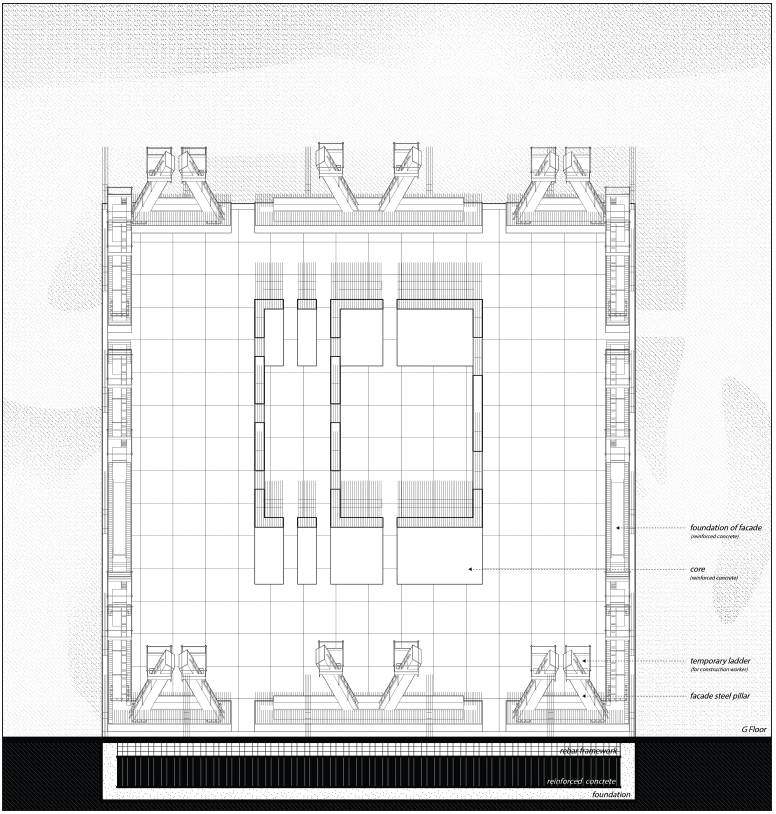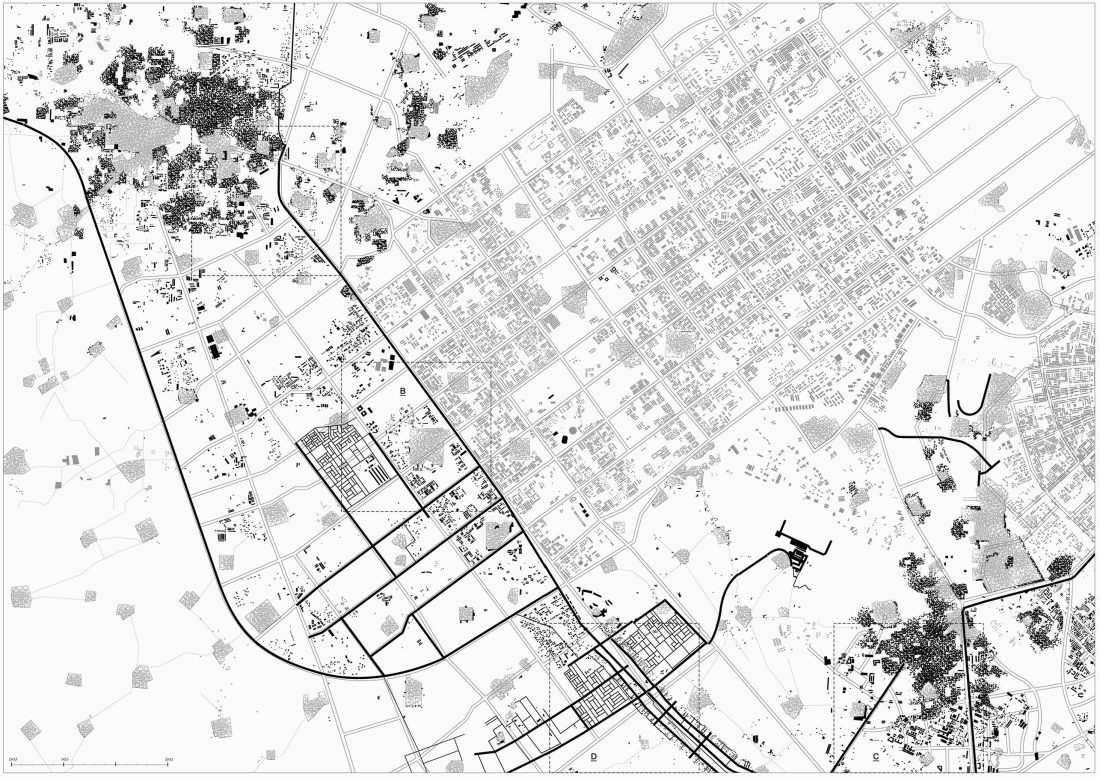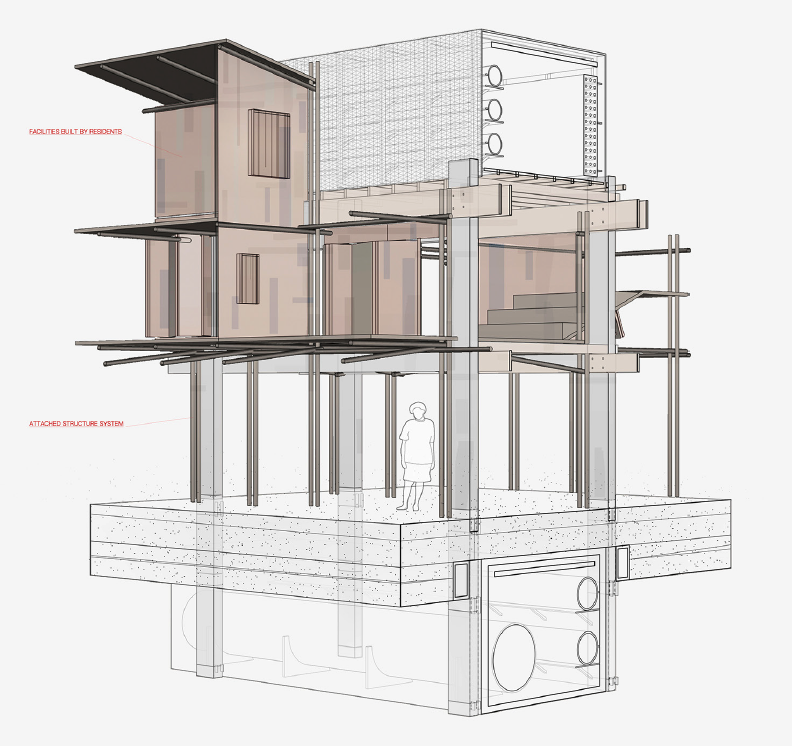The studio worked through two architectural modes: first, the back and forth between descriptive and analytical study that can be used to generate discursive, problematizing narratives; and second, the transformation of this narrative into a speculative fiction through projective design propositions. The studio considered how these modes of thinking through architecture can function when high-definition satellite images are primary sources of information; and specifically at how data visualisations can be described, analysed and manipulated into tools of architectural projection.
The context of the work was a new capital city designed for 3.2 million people on fertile, flood prone terrain in the Indian state of Andhra Pradesh. Construction of this new city — named Amaravati after the important Buddhist trading centre that occupied the site in the 2nd century BCE – began in 2016, based on a masterplan determined by a Singaporean engineering consultancy and major government buildings designed by Norman Foster.
Nearly twice as big as Chandigarh, Amaravati, even before its existence, embodied the contradictions of growing cities around the world. Its status as a new, planned capital offered an opportunity to consider the role architecture can play in territorial, urban and infrastructural scale questions and the role of the architect within the complexity of such planning processes. Can the architect make a contribution through the design of singular moments within such a landscape? Can she offer speculative visions that synthesize, frame and propel larger scale considerations? Or is the architect’s role to critique underlying assumptions and objectives through dystopian visions? The studio asks students to articulate for themselves a position toward these questions.
Chen Jiaao imagined the riverfront on Amaravati’s northern boundary as the site of a new aquaponic industry.
Chen Wei identified unplanned leftover spaces at the edge of existing villages that became the site for new civic programs that acting as an interface between existing residents and newcomers.
Fan Pinyue developed a provisional infrastructure for street corners where hawkers could serve the needs of the itinerant construction workers.
Fan Xinkai imagined a future for incomplete construction sites in a scenario that imagined the projects abandonment.
Jiao Lei studied the river’s meander and designed and infrastructure for bathing, fishing and washing clothes that revealed itself with changes in the tide.
Law Hong Yan developed civic refuges that act as places of shelter during annual monsoon flooding.
Wu Xialin developed new strategies for farming the zones near the river with small scale elements that demarcate land and provide shelter.
Zhang Jie imagined a mobile infrastructure for the 60m roadways that assists with the construction of the city.
Zhang Xiaoke works with a scenario that forecasts the city’s abandonment and proposes a strategy that uses existing and new roads to create a new agricultural network.
University of Hong Kong // Department of Architecture // MArch1_Fall 2019






